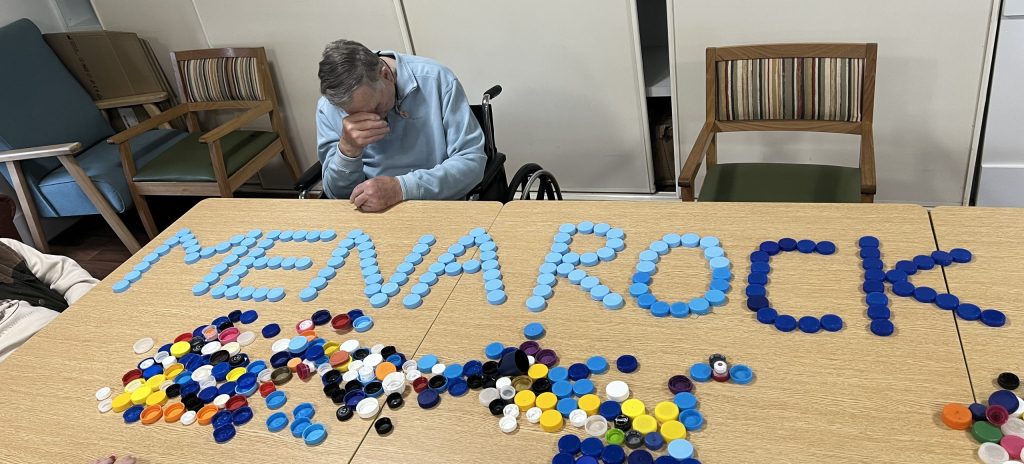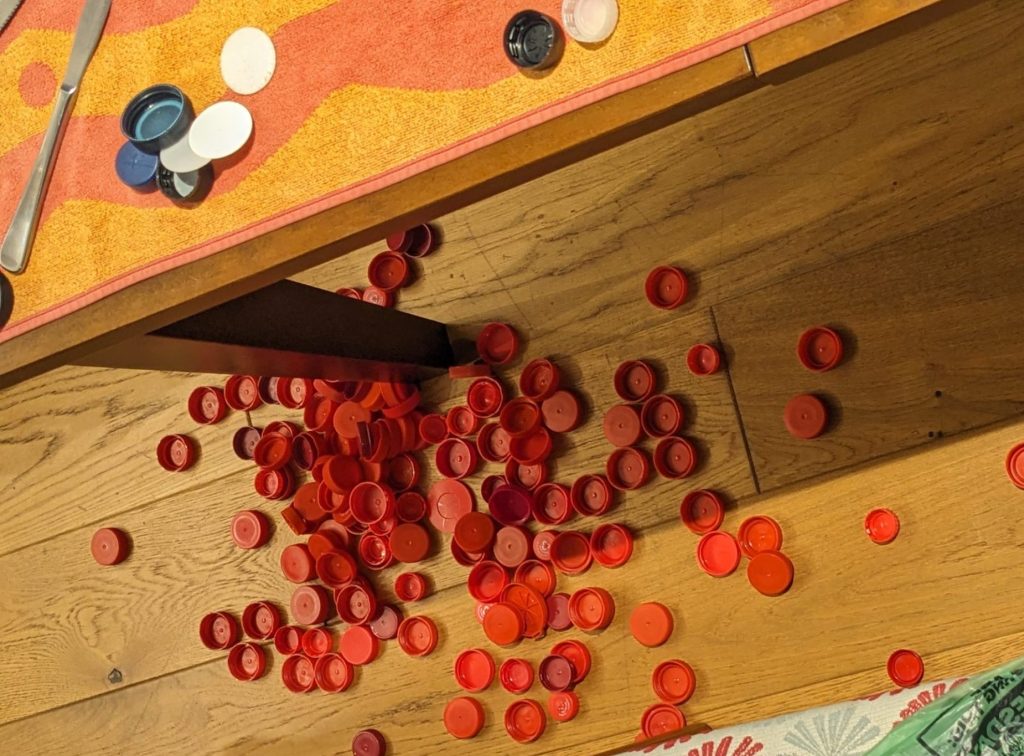Wine, antipasto, friends, interesting conversation and … bottle lids.
Yes! Bottle lids!
Once you are alerted to them, they start turning up everywhere: streets, parks, school grounds, beaches. These insidious little things fill 78 Olympic sized swimming pools every year. This is just what we consume in Australia. And horrifically doesn’t even account for all the bottles they were once partnering.
So, collect your bottle lids from milk, tetra, soda and water bottles, clean them, removing liners and stickers and invite your friends to a sorting party. Conversation will inevitably turn to the lids:
Q. What lids can actually be recycled?
A. Lids with the recycling symbol and numbers 2,4 and 5 within the symbol on the underside of the lids
Q. What lids can’t be recycled?
A. Pop tops – two types of plastic, those without a symbol or number, or with more than one colour, Squeezy honey bottle lids and metal lids
Q. If I don’t have enough lids to party, where can I take them?
A. The Recycling Hub at the Sandybeach Centre, Sims St Sandringham
Q. Does anyone else have so much fun?
A. Absolutely, the residents at Menarock Aged Care and the volunteers who produced the photos: 15 hours collecting, washing, and sorting 15kg of lids.

Q. Where do the lids go?
Q. What do they turn them into?
A. Sheet plastic for school art and technology departments, skateboard decks, chairs, trophies
Q. Which companies don’t give a shit? (you’ve had a few wines by now)
A. Some of the biggest producers. No spoiler alert. Get your party on and find out.
